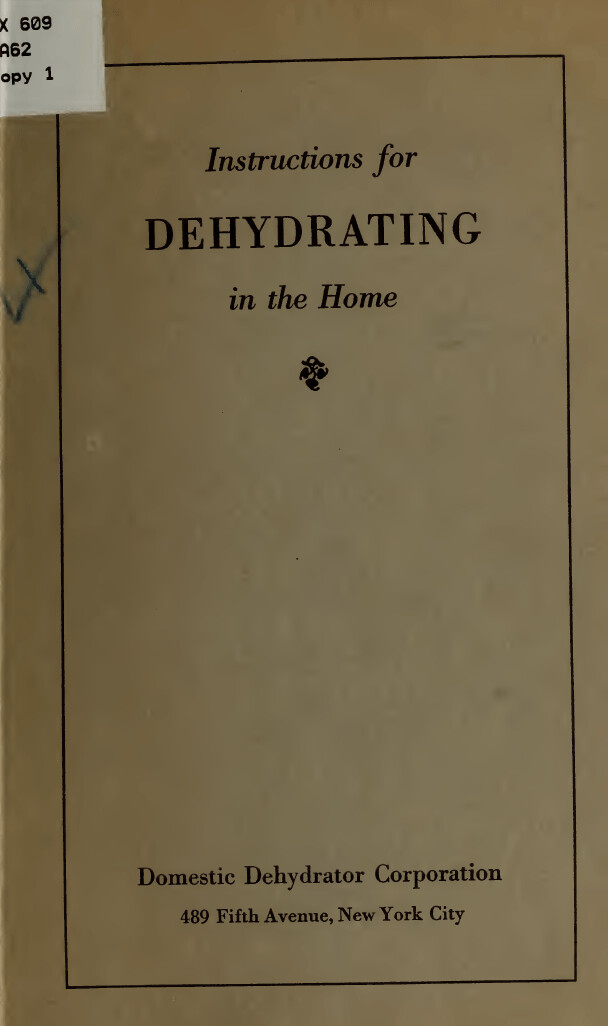$2 Download. Instructions for Dehydrating in the Home. 1924 – 36
DEHYDRATING FOODS
The process of dehydrating foods in the Dehydrator is
JL very easy and convenient. When the few simple princi ples
are understood, and after two or three experimental runs
have been made, it will be seen that the Dehydrator does
preserving automatically and preserved foods of surpassing
quality can be stored in astonishingly small space. Fresh
garden and orchard flavors are retained and all the nutritive
values are held fully. Only the water content is removed
from the materials, and when soaked in plain water for a
time, they take back the water they were robbed of. Thus,
from dry-fresh, the foods become actual-fresh and can then
be cooked and served just like the strictly fresh varieties.
Dehydration is commanding world-wide attention. The
Food and Agricultural Departments of the Governments are
actively interested; and eminent food authorities such as Dr.
Harvey W.Wiley, Alfred W. McCann, Prof. E. V. McCollum
and others are earnestly recommending dehydration and
endorsing properly dehydrated foods; especially because
these foods retain vitamines and other valuable principles.
The Food Institute conducted by the New York Tribune
says: "'Dehydrated' is not merely a newfangled word for
'Dried'; it means something new in results. 'Water, waste
and work' are all taken out of the fruit or vegetable when
it is dehydrated, and the concentrated food values and
flavors are left. . . . There is more in this new way of drying
vegetables and their role in meeting modern conditions
than meets the eye. Housekeepers cannot afford, in these
crowded days, to ignore the compactness and serviceability
of dehydrated foods."
Why Dehydrating is Superior
to Drying
Asparagus
Green, medium sized stalks yield the best looking dehydrated
product.
Cut lengthwise in half, as whole stalks take too long to dehy drate
and their uncut skin prevents ready absorption
of water in refreshening, whereas cut all the way down
in half, restoration is complete and satisfactory.
Blanch 5 to 6 minutes, according to age.
Start dehydrating at 110° for 1 hour, then raise and hold to
finishing temperature of 118°.
Water in humidifier, 6 to 8 hours.
Time, 10 hours on, according to size.
Sufficiently dry when no free moisture can be squeezed out
of cut end and stalks are rather leathery.
Beets
Leave on roots and four to six inches of tops. Wash, then
cook until done. Slip off skins. Slice }/$ inch thick.
Starting temperature, 130°; raise after one hour to 160°
until dehydrated.
Water in humidifier, 3 to 4 hours.
Time, 6 hours on.
Ready when pieces show tendency to become rather
brittle and give out no free moisture when squeezed.
Beans
Select stringless variety or remove strings and stems and
tips.
Cut lengthwise evenly.
[«]
Website & Reports published by Youra Media – Seattle Washington
© Youra Media 2023





